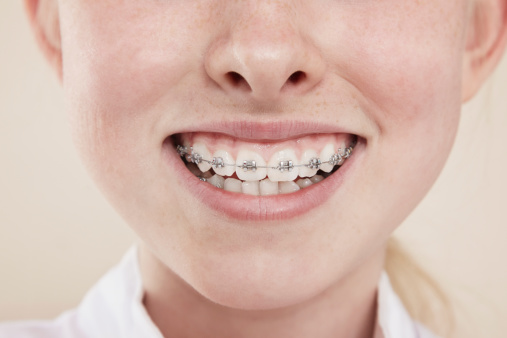
Modern parenting can be costly. It’s not just the necessities—diapers, clothing, shoes, food and more food (they never stop eating!), and medical costs—it’s all those unexpected items. What about summer camp and after-school activity fees, sports equipment (do we really need that helmet?), and the birthday presents for their friends? Don’t even talk to me about saving for college.
There’s another cost that many parents take on—the price to provide a child with a perfect smile. For many middle class families, orthodontics has become a right of passage—albeit a painful and ridiculously expensive one.
In the decades that have passed since I was a child with braces, the technology has advanced considerably. Today, parents can choose the traditional metal braces, clear ceramic braces, or even braces that are placed on the back of the teeth. There is even a clear, custom made mouth guard available for slight corrections. As the choices have expanded, so have the costs. These days, orthodontists charge anywhere from around $5,000 to a shocking $13,000 for more extensive correction.
Maybe it’s time to rethink the whole endeavor. In a surprisingly fascinating piece for The Atlantic, Michael Thomsen suggests writes:
Today’s orthodontic practices rely on equal parts individual diagnosis and mass-produced tool, often in pursuit of an appearance that’s medically unnecessary [emphasis mine]. Basic advances in brushing, flossing, and microbiology have largely defeated the problem of widespread tooth decay—yet the perceived problem of oral asymmetry has remained and, in many ways, intensified.
Orthodontics is not so different from other medical specialties. Plastic surgeons provide services to those maimed in accidents and to those born with disfigurements. But they also perform elective cosmetic surgeries on paying clientele.
Yet, orthodontists primarily serve children. And we don’t generally provide “unnecessary” medical services to children. As Thomsen points out, the American Association of Orthodontics actually markets itself as being able to provide a better future for your children. The organization’s website suggests that “A great smile helps you feel better and more confident . . .” and “can literally change how people see you—at work and in your personal life.”
Many parents can’t afford that “great smile,” though, which is why a thriving cottage industry of homemade orthodontic remedies has surfaced to provide the perfect smile to those who can’t afford licensed orthodontic work.
It is amazing the extent to which straight teeth have become a requirement for professional life. Even kids who did have braces often find that their teeth have moved back — they then start the whole process over as adults.
The decision to get braces is also fraught with intense social pressures for parents. What does it say about you if you decide to skip all that expensive orthodontic work for your kids? At the very least, people would consider it a total parental failure that you haven’t done everything to give your child every possible advantage.
While there is a legitimate need for orthodontics to correct truly disabling problems, parents should be aware that much of what is offered is cosmetic. Just as reasonable parents wouldn’t dream of providing their young children with lip fillers, nose jobs, tummy tucks, boob jobs, and other Kardashian-like treatments, parents might want to reconsider the need for pricey cosmetic orthodontic work.
This article originally appeared on Acculturated
More from Acculturated:
More Must-Reads from TIME
- Why Trump’s Message Worked on Latino Men
- What Trump’s Win Could Mean for Housing
- The 100 Must-Read Books of 2024
- Sleep Doctors Share the 1 Tip That’s Changed Their Lives
- Column: Let’s Bring Back Romance
- What It’s Like to Have Long COVID As a Kid
- FX’s Say Nothing Is the Must-Watch Political Thriller of 2024
- Merle Bombardieri Is Helping People Make the Baby Decision
Contact us at letters@time.com